“Hmm, wonder what’s around that corner” is just the sort of musing that makes a garden fun to explore. It leads us to the topic of incorporating mystery into the garden or landscape.
Adding a bit of mystery to your garden is a time honored landscape designer's trick for playing with a space. To make it feel either more expansive (it looks small but it never seems to end?) Or, more intimate (how can 20 acres feel so intimate?). By playing on the imagination and natural curiosity of visitors you can entice them to move outward from the house. Or, outdoor space into the landscape.
Whether it comes from a well placed gate or an arbor partially concealed by vines. A subtle bend in or slight narrowing of a path or a strategically sited plant that obscures what lies beyond. Or, the distant sound of bubbling or tricking water. There are elements that can help to lead visitors on the journey that provides the best experience in the landscape.
Here are just 5 ways to add mystery to your garden.
(Gated wall above by Terren Landscapes, Wynnewood, PA)
3 Common Mistakes
- Not committing to a sense of scale. When it comes to creating mystery, consider the relative height and depth of surrounding elements…and then go bigger!
- No one wants to journey to a dark and unwelcoming space. Add lighting or even plants with white flowers if leading to a very shady spot.
- No there, there. At the end of the surprise should be…a surprise.
Create a Window to What Lies Beyond
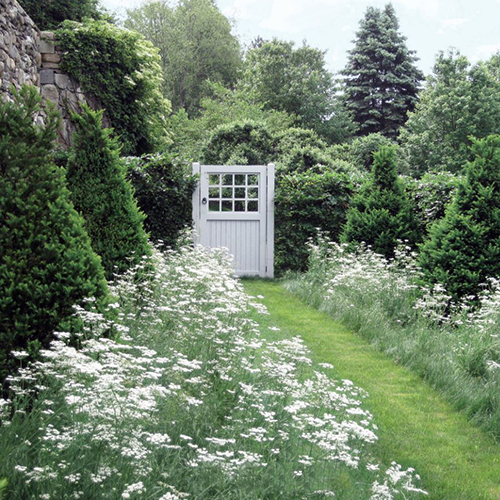
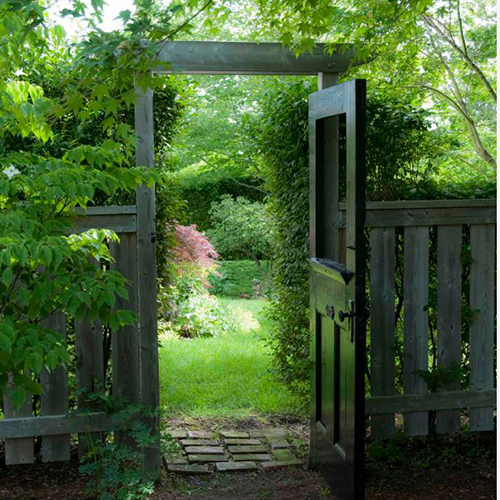
Seriously, if you saw a door with a window in a garden you'd want to open it up. Then see what's on the other side, right? Here two designers use a framed out door to create separation from one garden room to the next. On the left, a mowed path of free-flowering white perennials leads to a multi-pane door. To the right, the designer salvaged this door and removed the glass panes. This was in order to not confuse birds who might fly into it. Both are inspired examples of how use mystery to transition from space to space.
Left: Doyle Herman Design Associates, Greenwich, CT; Right: Rooms & Blooms, Toronto)
Mess with Their Minds
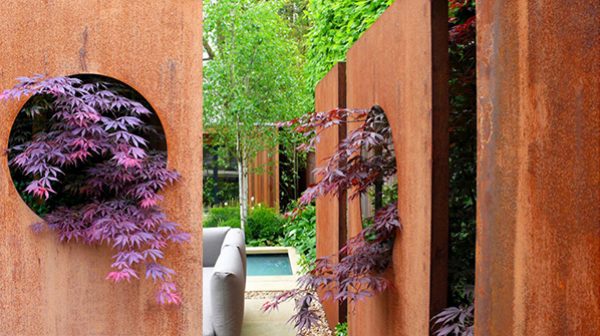
We've shown you a side view. And, inserted a full frontal view of what might be one of the most interesting ideas for mystery we've seen. Here the designer used patina on metal panels to create a walled effect. Then cut a moon gate right smack in the middle to allow the Japanese maple to poke through some branches. There’s something awesome on the other side, but you only get a hint. So cool!
(Design by London Garden Designer, UK)
Play With Perspective
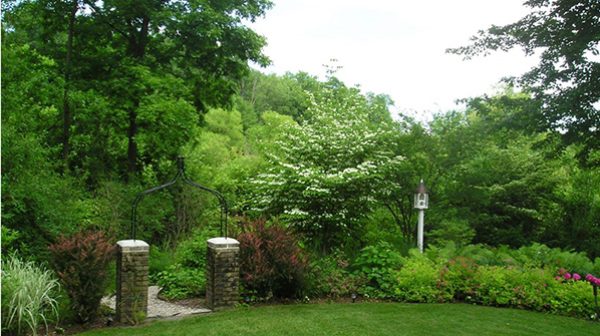
Seen from a distance all three of these designs create the same sort of response. What are they hiding and how do I get there to see it! At the top left, an arch on stone pillars hints at something worth the journey down that winding path. (How simple would this be in just about any yard). The two images below show how to use pretty basic plants (boxwood and Queen Anne's lace). Used to play with perspective by narrowing the view. What makes all of these work so well is the payoff on the other side.
(Top Left: Clark’s Landscape, Grand Rapids, MI; Bottom Left: Jonathan Raith, Nantucket, MA; Bottom Right: Jonathan Snow Design )
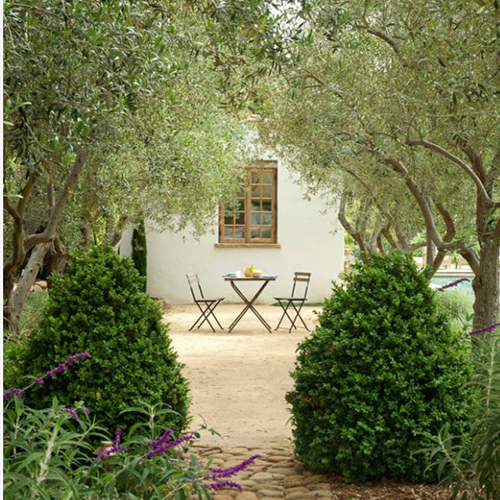
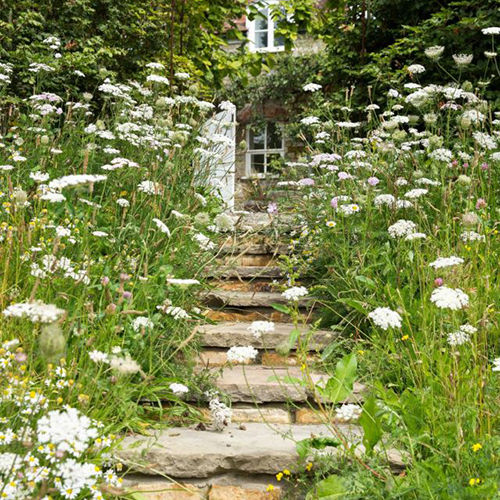
Use Light and Sound
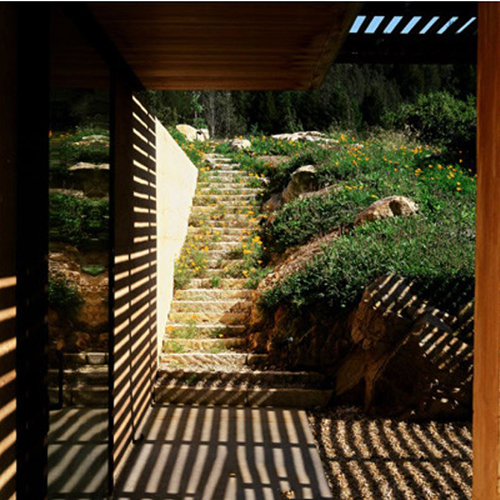

Adding mystique to the garden is not always just about plants. At left, strategically placed lath above this space creates the most alluring of shadows below. There’s no way you’re not going to want to get up close to this kind of magic. And, at right, by using a low water feature with a steady stream that's going to be heard way before it's ever seen. This designer has created a bread crumb trail to lead to the space above.
(Left: Blasen Gardens, San Anselmo, CA; Right: Scot Eckley, Seattle, WA)
A Game of Hide and Seek
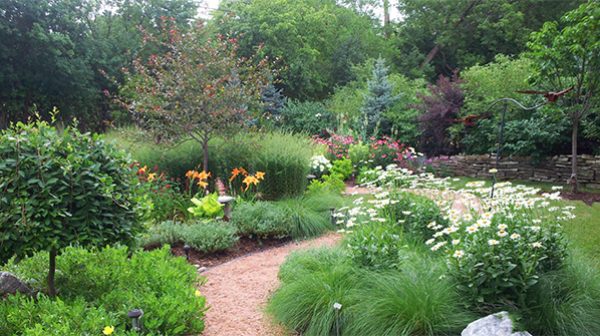
A path set on an angle rather than on an axis is one of the simplest way to create mystery. This is because it demands that you go exactly where you are led. What makes this one really sing is the way the designer has exaggerated the arc of those curves. Then used wonderfully tall grasses and a specimen tree to completely hide what's around the bend. (Hawks Landscape, Milwaukee, WI)
What makes this space special is the use of sheared shapes that make you think this is a formal landscape. With the almost visual confusion of those giant flowering shrubs. It's the use of a symmetrical pair of plants rising above the rest of the garden that creates the mystery. (Not only where we're going but what sort of garden is this anyway!) While this is a garden that takes time to make. The idea of using a pair of outlier shrubs as a frame is something you could do today.
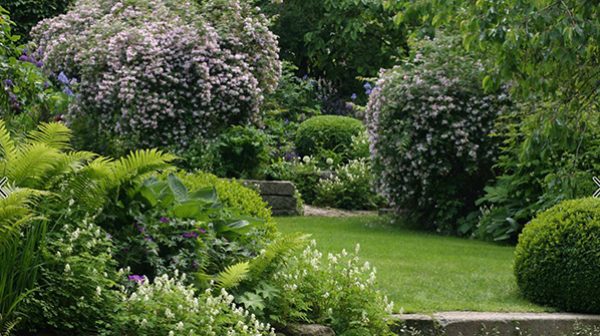




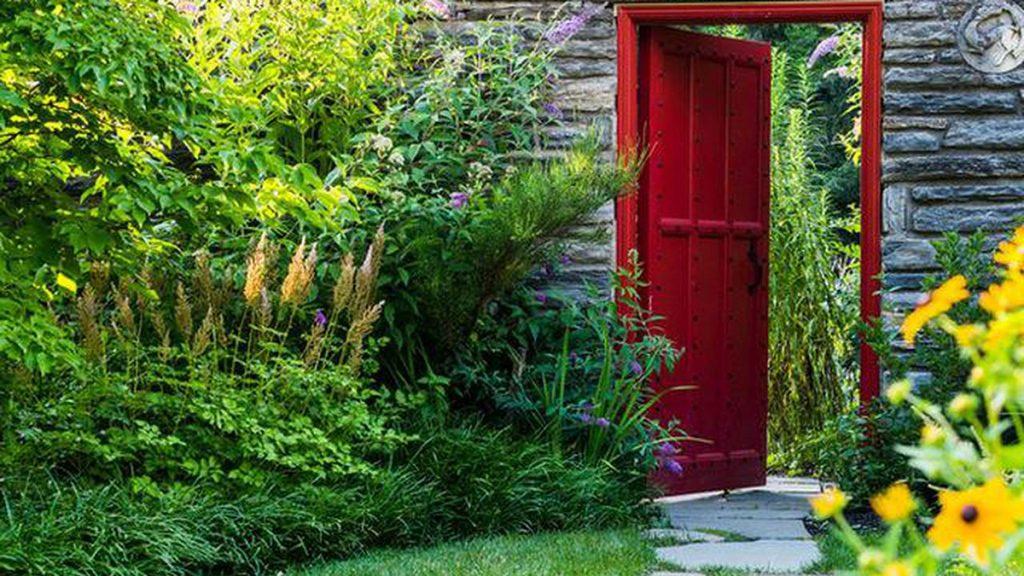
Please login to comment.
Don't have an account?
Sign Up for free